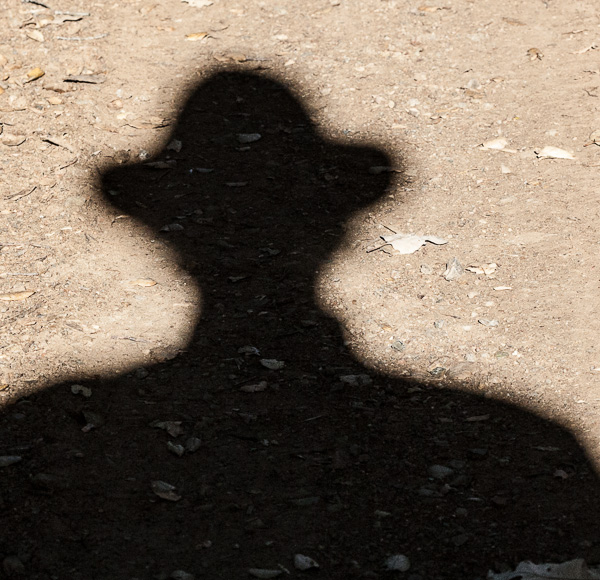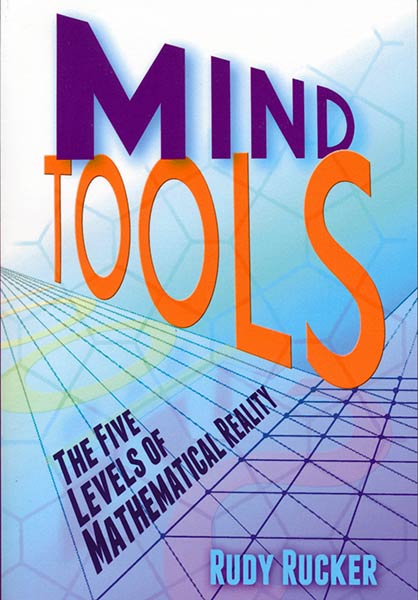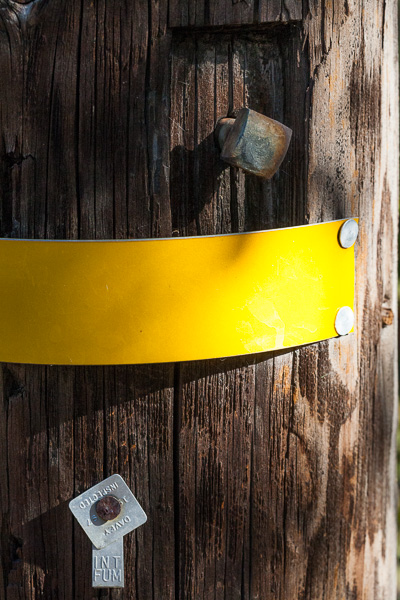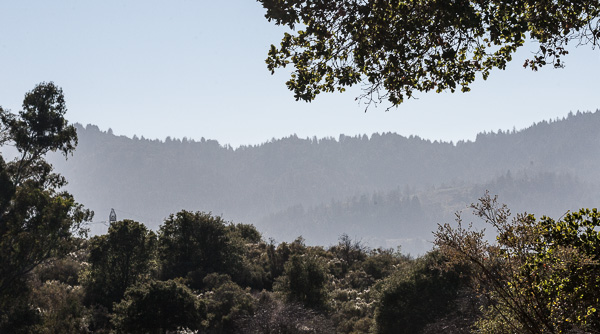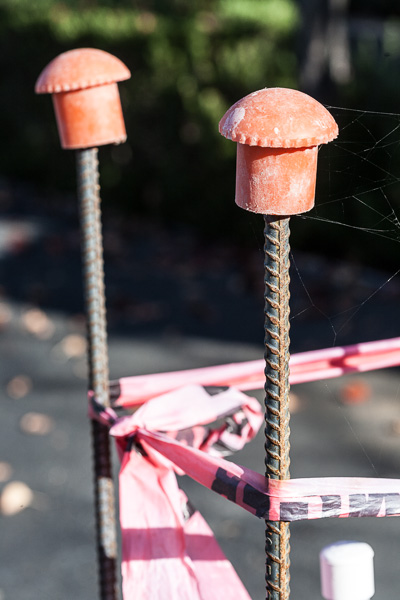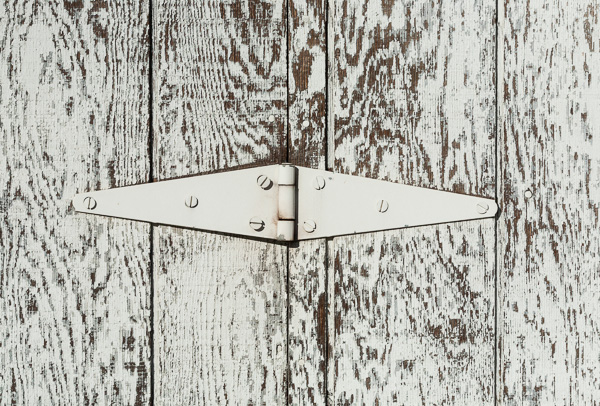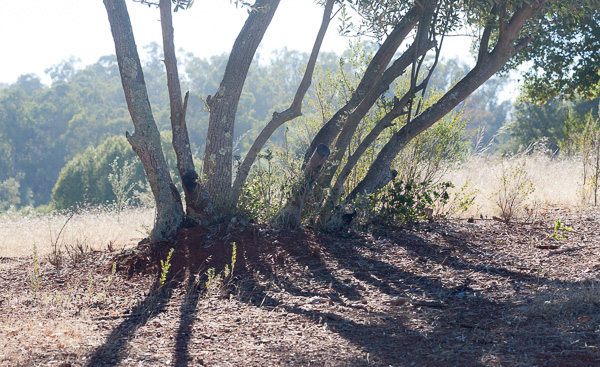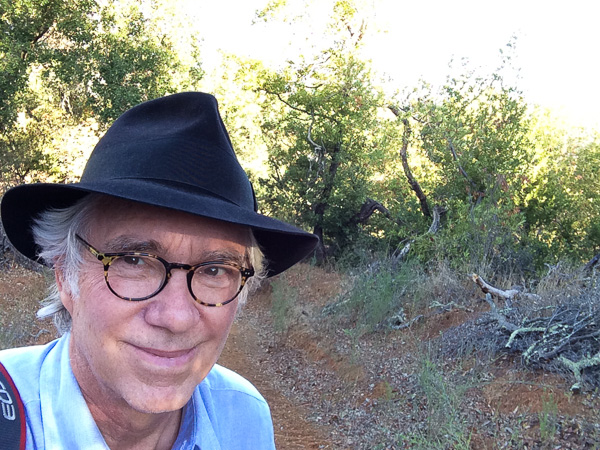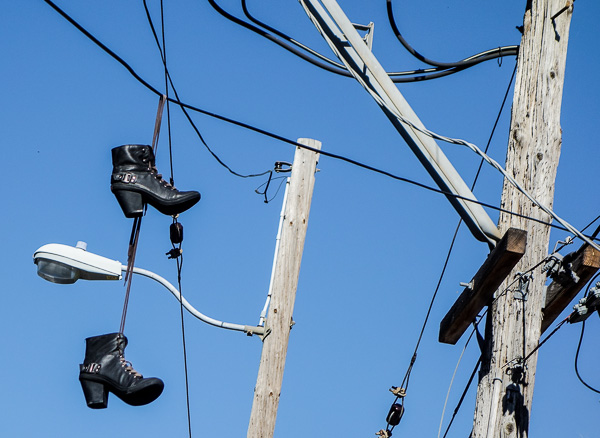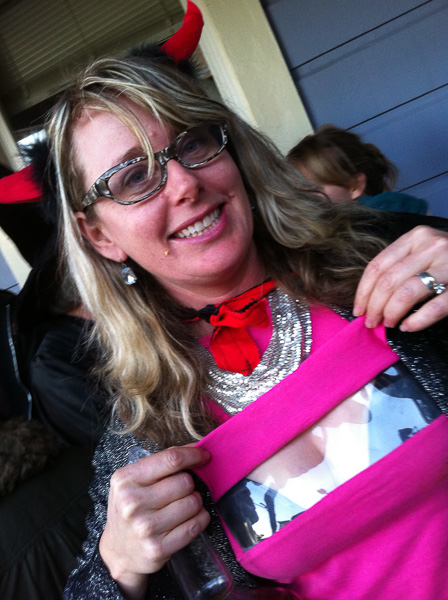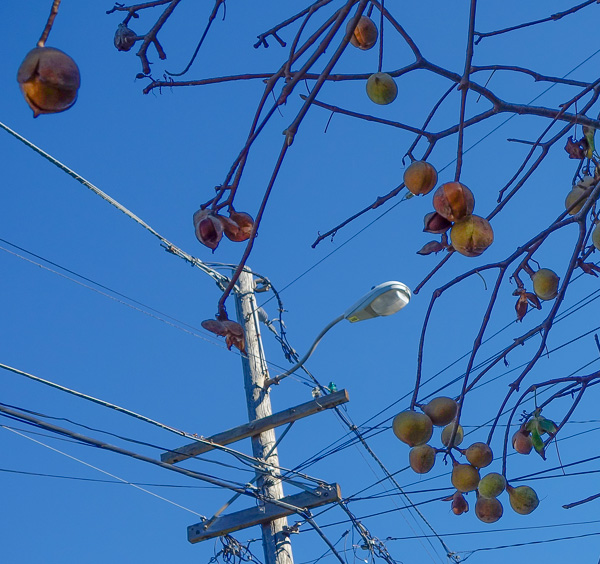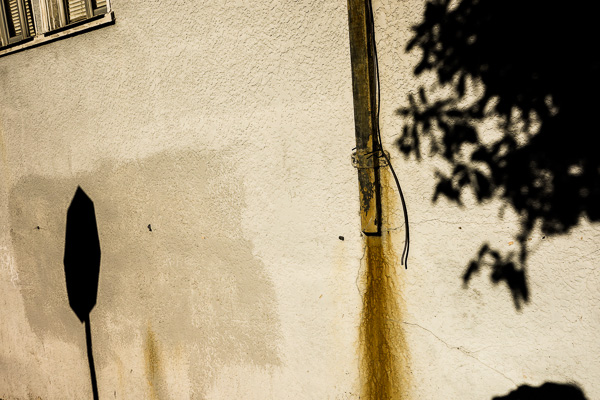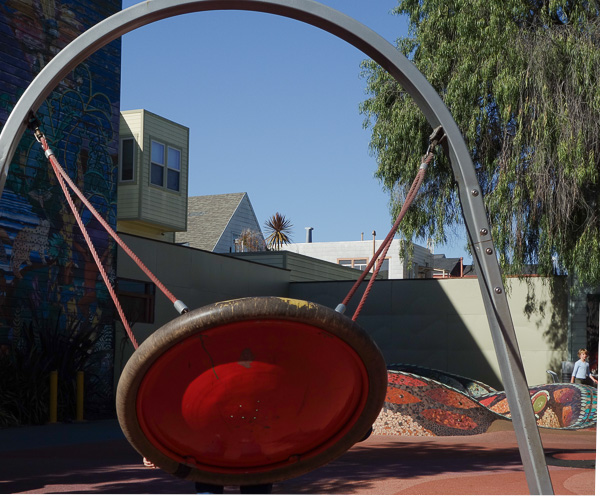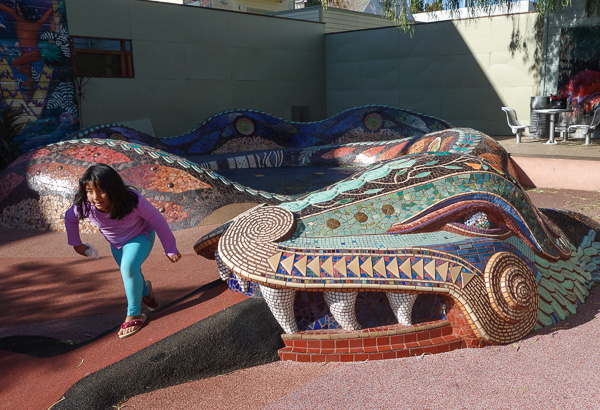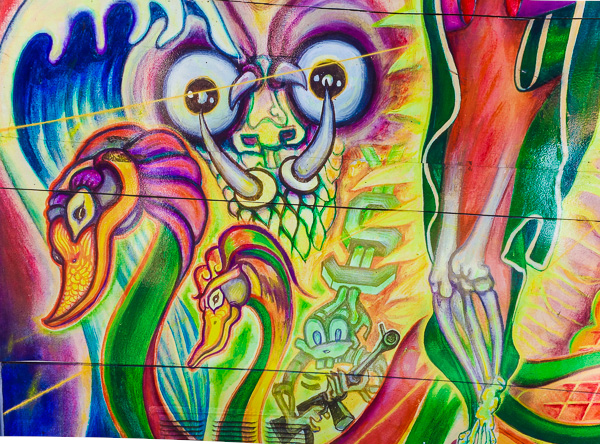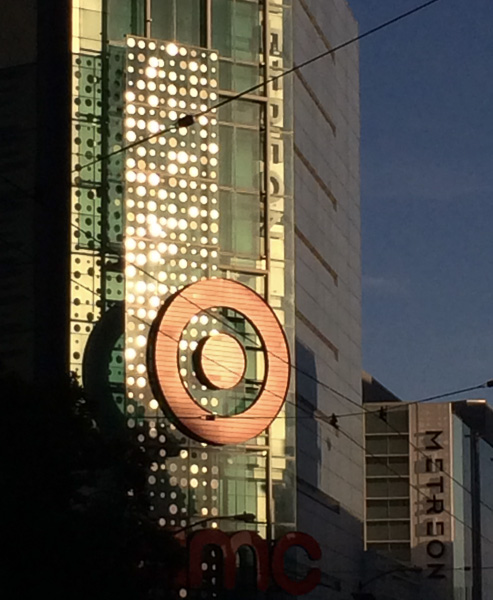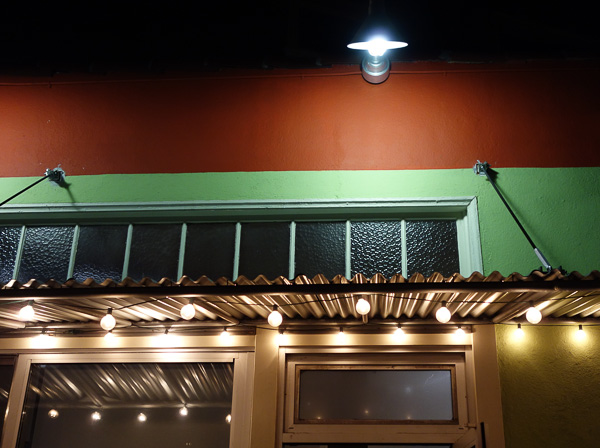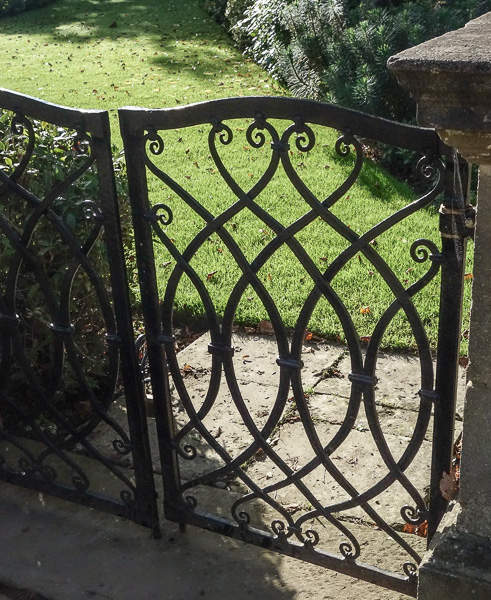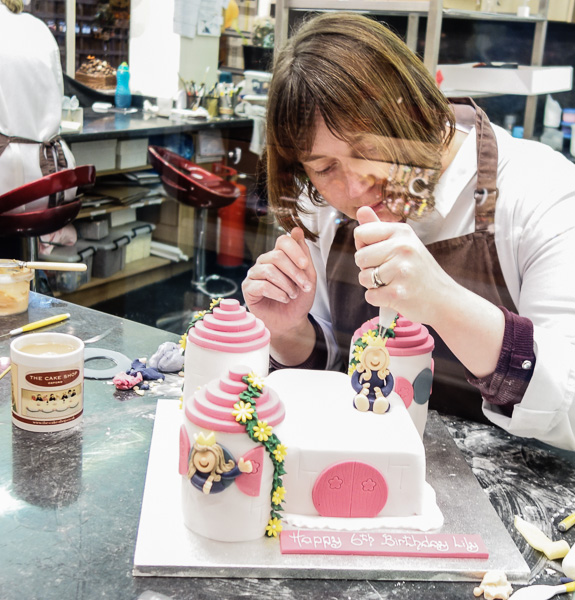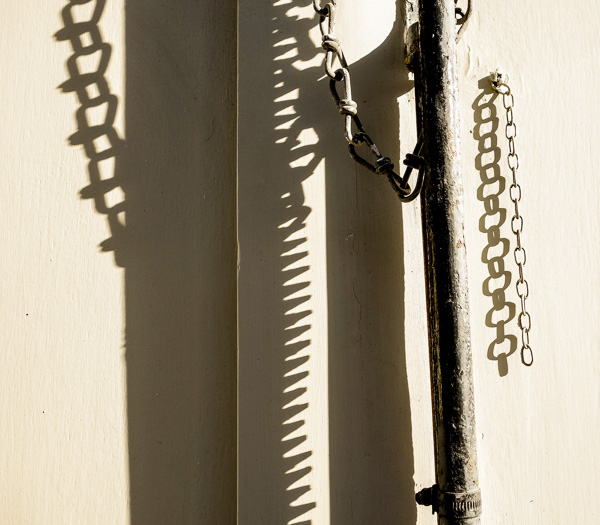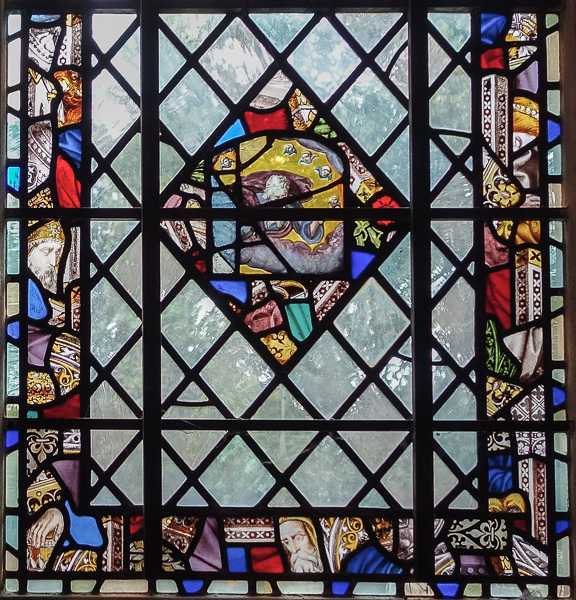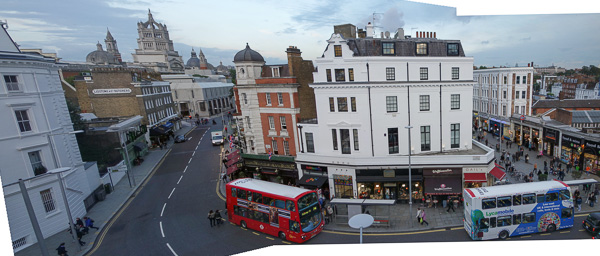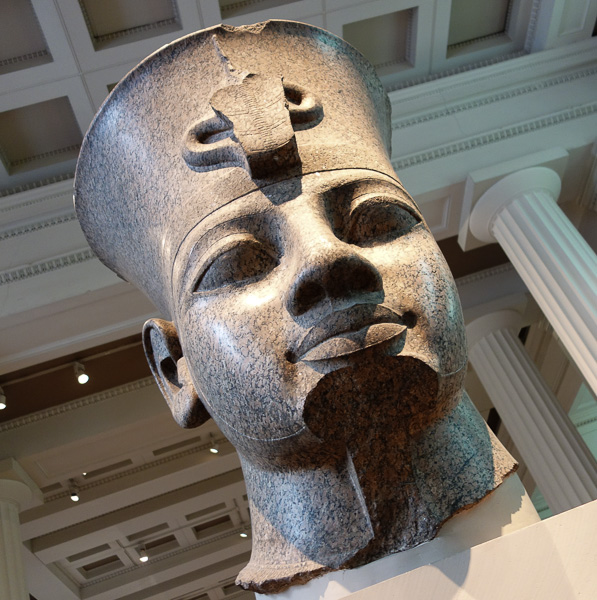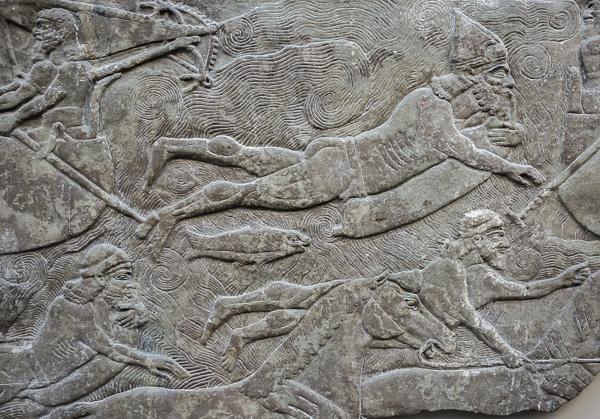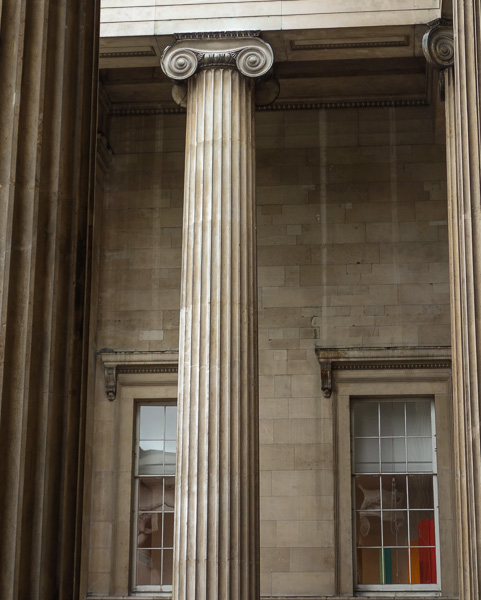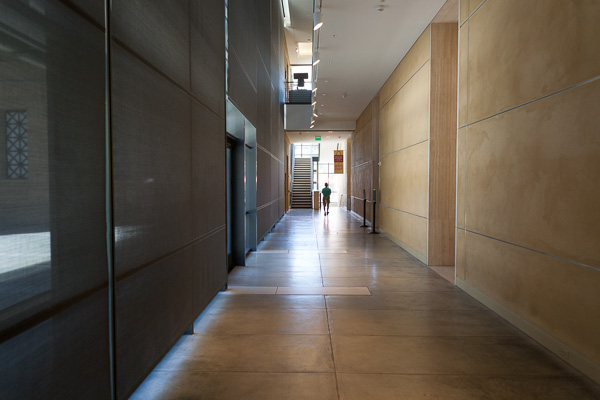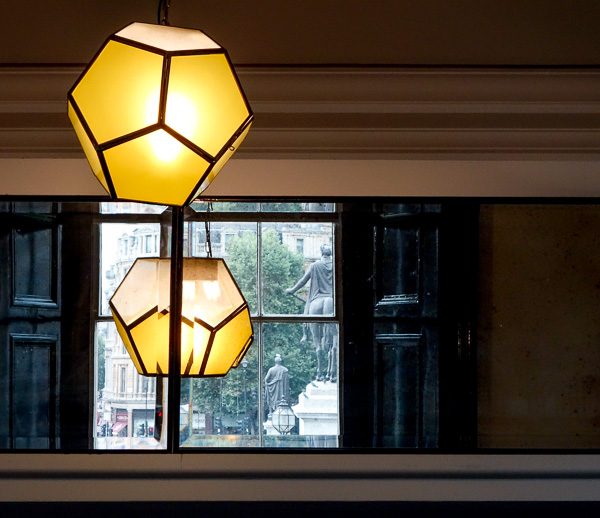The Big Aha is out in ebook, paperback and hardback now. I’ve ordered a bunch of the paperbacks and hardbacks to mail out to my Kickstarter backers. Still waiting them to arrive. This whole process has more steps than I’d quite imagined. But I’m almost done.
Late-breaking news: A great review of The Big Aha by Giulio Prisco, published in Skefi’a and reposted in io9! The book’s first review and it rocks. Whew.
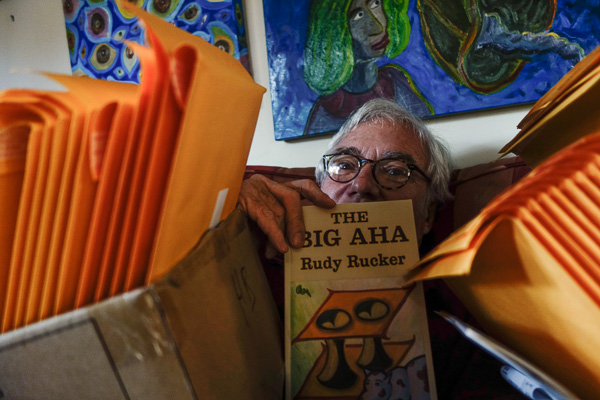
Early warning: There will be a release party and an art show for The Big Aha at Borderlands Books on Valencia Street in San Francisco on Friday, December 17, 2014. I’ll be mentioning this again…
What next? Over the last few months, I got back the rights to my three old “transreal” novels White Light, Secret of Life, and Saucer Wisdom . What is transrealism, you may ask? Read my 1983 manifesto on the topic.
I’ll probably be republishing those three novels via my Transreal Books early in 2014, as ebooks for sure, and probably as paperbacks as well.
While I’m at it, I might as well republish my old memoir/rant All the Visions . I originally typed All the Visions on a giant long scroll of paper, emulating the divine Jack K. working on On the Road. My usual activities.
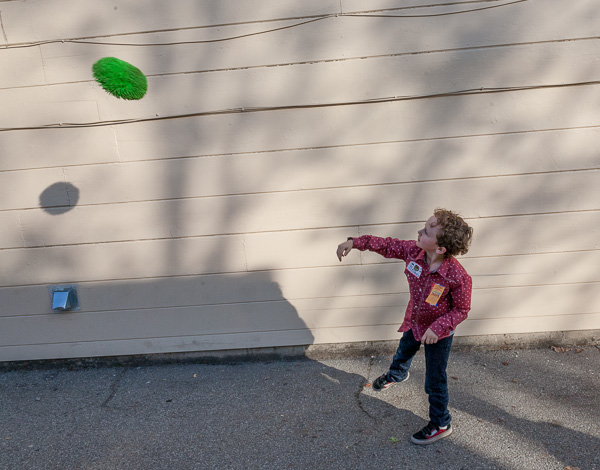
Keeping the ball in the air.
Another project I’m looking towards in 2014 is to assemble my electronic journals into a fat book. I have about half a million words on disk for the period 1990 ”“ 2012. I’m editing that and pruning it down. Maybe I can squeeze it into a single 800 page volume. My role model here is the phonebook-sized Andy Warhol Diaries of 1989. I read that sucker for about a year, a couple of pages a day. Would be nice to make a book like that.
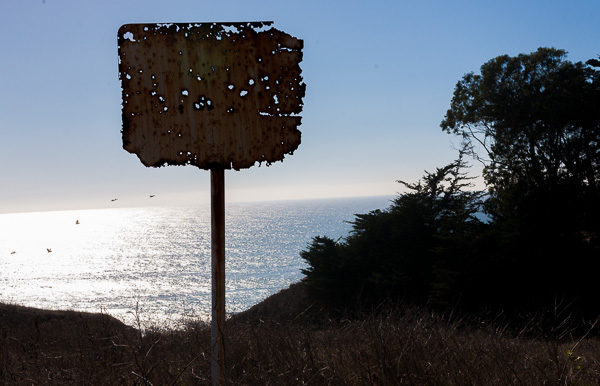
Some of today’s photos are from an recent outing to the fields and cliffs above Four Mile Beach and near Davenport, north of Santa Cruz. This is a Davenport photo. The shot-up-sign archetype. “Words suck,” as Beavis and Butthead used to say.

There’s a nice balance between agriculture and ecopreserve on the coast above Santa Cruz. Fields of, like Brussels sprouts, fine. The point is that there’s no McMansions, no hotels, no roadside attractions. Just the cliffs and the beaches. Although, of course, there is the Whale City Bakery in Davenport, always worth a stop.
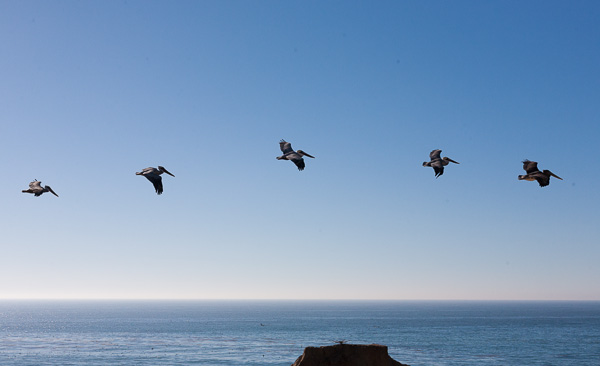
We saw a huge number of pelicans out there. There’s been a vast school of anchovies in the Santa Cruz Bay lately, and the birds, seals, dolphins and whales have been gorging themselves.
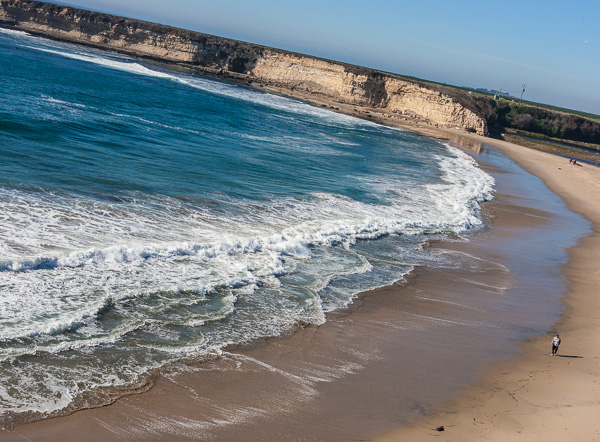
There’s always some surfers around, sometimes quite a few of them, but as it cools down and gets windy, you don’t see many people actually walking on the beach. If you’re willing to take a little trouble by, like, walking a half mile from your car, it’s not that hard to find solitude in the unpopulated zones of California…and, really, most of the state is unpopulated. The cities are just small spots. Our beloved anthills.
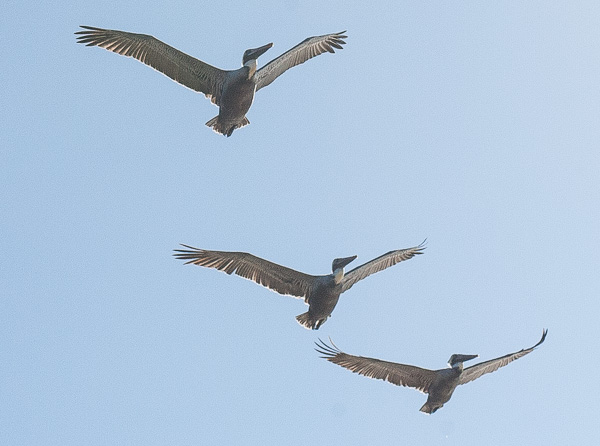
Something heavy and cosmic about seeing pelicans against a sunny sky. People used to wonder where the dinosaurs went, but now it’s commonly said that the thunder lizards didn’t “go” anywhere. They just evolved into birds. Pelicans are pterodactyls…but with feathers. Pterodactyls 2.0.
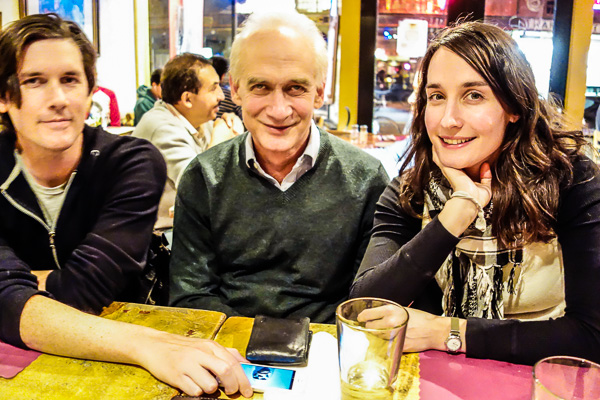
My cinemetographer/photographer friend Eddie Marritz was in San Francisco, and we had a tapas dinner with him, his daughter Leda, and Leda’s husband Tim Conkling. Tim’s a game programmer who recently started writing games on his own. Among other things, Leda runs an interesting writing blog with her friend Steph: Small Answers. A new post every Monday. I love the Marritz family—I got to know them because I went to college with Eddie’s brother Don.
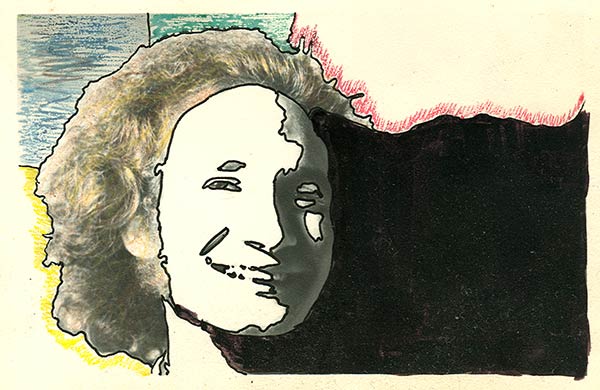
This is a photo of Eddie that I shot on film, developed, and handcolored—sometime around 1970. I was in grad school. Had a lot of free time back then. No computers.

What else? These are some of the roots that my wife mashed for a Thanksgiving side dish. Handsome fellows, no?
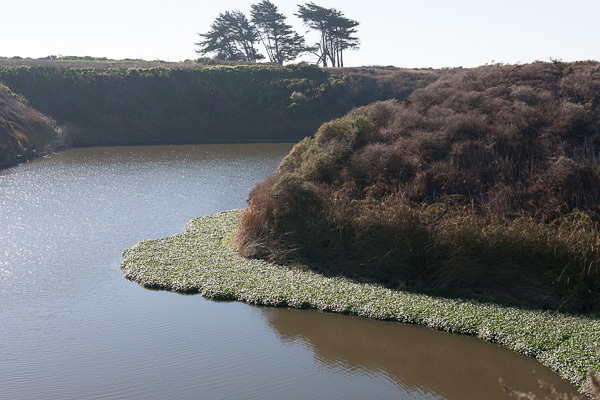
Beautiful little slough behind Four Mile Beach. Very hard to even see this hidden bight of water, the topography is kind of weird. I love that S curve. Nature gives us so much, everywhere, all the time. When I remember to notice.
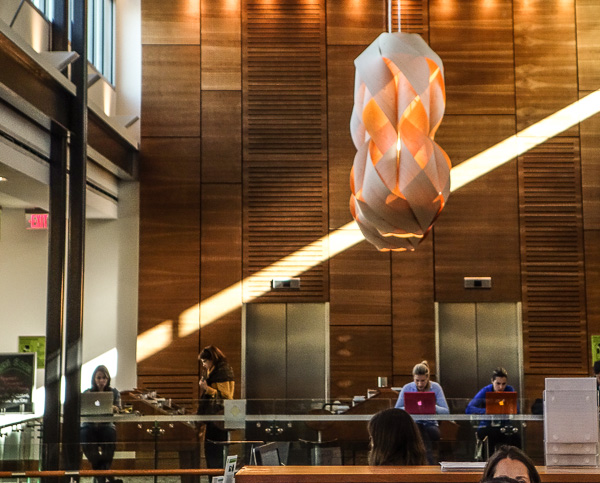
But, like I always say, we humans are part of nature too. Building our intricate hives. And those can look cool, too. This chandelier in the new Los Gatos library is made out of a giant wood shaving that’s knotted around on itself. The highlight is that slanting plane of sunlight. I rushed this shot, not wanting to alarm the library patrons, but you can improve a slightly blurry shot in Lightroom. Not necessarily sharpen it to death, but play with the sliders till the picture’s effects look intentional or preordained.
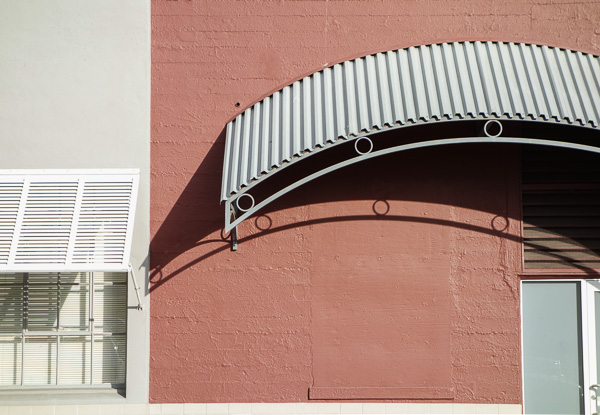
This was an easier shot, bang, it jumped at my eye. The back of a building along Pacific Avenue in Santa Cruz.

I’m having a sale on my paintings this month, and I’ve managed to sell three of them in the last week. Check out the insanely low prices if you’re interested in a special New Year’s present for yourself or for a loved one.









